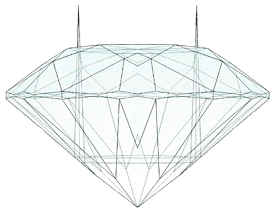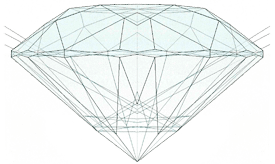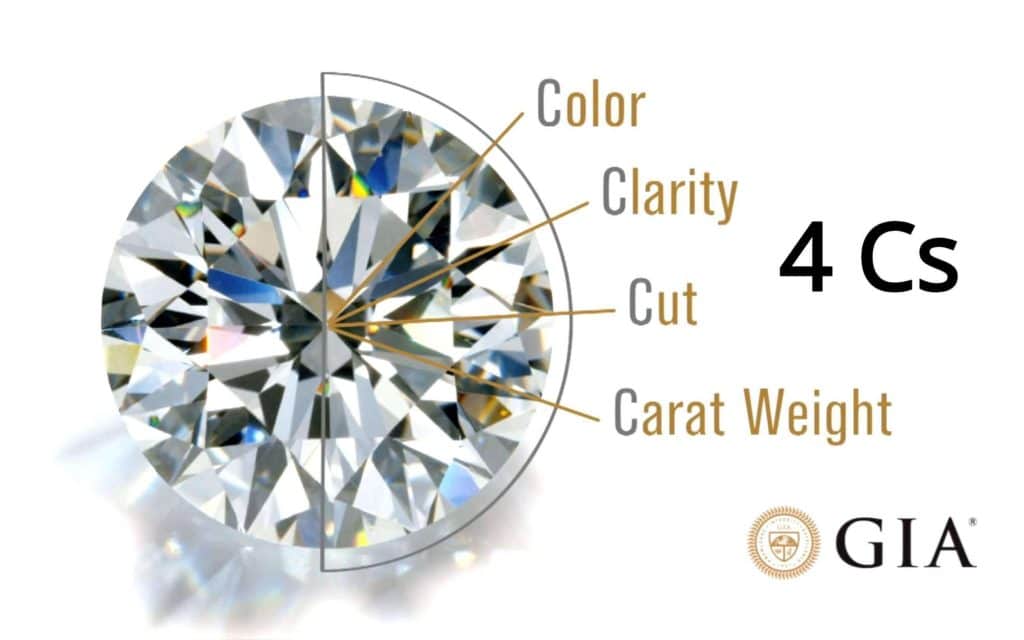About Your Diamond
Every piece of jewelry whether stock or custom-made is hand selected, created or collaboratively designed with you in mind. Each item has a story and is a treasure. The combination of skilled artists and technology allow us to transform basic designs and concepts into a personalized, signature piece that compliments the uniqueness and beauty that is you. The best part – Rivchun Jewelers is the brand. This allows us to create a custom-made, domestic item while removing the anxiety of the term “custom”. We get you and will create a transparency to the entire process that parallels price and value.
Diamond Sourcing
Diamond cutters and gem collectors visit Rivchun Jewelers from around the globe on a regular basis. Rivchun Jewelers acquires the majority of their diamonds from ethical sources and cutting sites in Russia and Israel. They produce, acquire and cut some of the finest diamonds in the world. That being said, every diamond or gem, even from the finest sources, is not guaranteed to be a great value. It is important to us at Rivchun Jewelers to scrutinize each and every diamond and gem prior to acquiring it. We have sorted and rejected thousands of diamonds each decade in our quest to own the finest at a fair value.
American Ideal Cut
Traditionally, light entered an ideal-cut diamond from the table or top of the diamond, hit a facet, came across and hit a like facet and then exited back through the top of the diamond creating an optimum balance of brilliance and dispersion for its owner.
Today, ideal-cut diamonds fall within the parameters of a dozen variables that impact optimum brilliance (reflective or white light return) and dispersion (color play). Light enters anywhere from the girdle up, hits within a critical cone angle, hits, hits, hits until it seeps out of the angle and exits the girdle. There may be a variance of up to 40% in price-per-carat based on cut-grade when comparing diamonds of the same size, color, clarity, and GIA certificate. For this reason, it is imperative that your jeweler reviews your diamond with you so that you understand the unique characteristics and value of your investment.



The 4 C’s
The value of your diamond is determined by examining the “Four C’s”
Until the middle of the twentieth century, there was no agreed-upon standard by which diamonds could be judged. GIA created the first, and now globally accepted standard for describing diamonds: Color, Clarity, Cut and Carat Weight. Today, the 4Cs of Diamond Quality is the universal method for assessing the quality of any diamond, anywhere in the world. The creation of the Diamond 4Cs meant two very important things: diamond quality could be communicated in a universal language, and diamond customers could now know exactly what they were about to purchase.
As creator of the Diamond 4Cs and the International Diamond Grading System™, GIA is not only a global authority, but the world’s trusted source for unbiased assessment.
Diamond Color
The color evaluation of most gem-quality diamonds is based on the absence of color. A chemically pure and structurally perfect diamond has no hue, like a drop of pure water, and consequently, a higher value. GIA’s D-to-Z color-grading system measures the degree of colorlessness by comparing a stone under controlled lighting and precise viewing conditions to masterstones of established color value.
GIA’s D-to-Z color-grading scale is the industry’s most widely accepted grading system. The scale begins with the letter D, representing colorless, and continues, with increasing presence of color, to the letter Z.
Many of these color distinctions are so subtle that they are invisible to the untrained eye; however, these distinctions make a very big difference in diamond quality and price.
Diamond Clarity
Natural diamonds are the result of carbon exposed to tremendous heat and pressure deep in the earth. This process can result in a variety of internal characteristics called ‘inclusions’ and external characteristics called ‘blemishes.’
Evaluating diamond clarity involves determining the number, size, relief, nature and position of these characteristics, as well as how these affect the overall appearance of the stone. While no diamond is perfectly pure, the closer it comes, the higher its value.
The GIA Clarity Scale has 6 categories, some of which are divided for a total of 11 specific grades.
Many inclusions and blemishes are too tiny to be seen by anyone other than a trained diamond grader. To the naked eye, a VS1 and an SI2 diamond may look exactly the same, but these diamonds are quite different in terms of overall quality. This is why expert and accurate assessment of clarity is extremely important.
Diamond Cut
Diamonds are renowned for their ability to transmit light and sparkle so intensely. We often think of a diamond’s cut as shape (round, emerald, pear), but a diamond’s cut grade is really about how well a diamond’s facets interact with light.
Precise artistry and workmanship are required to fashion a stone so its proportions, symmetry and polish deliver the magnificent return of light only possible in a diamond.
The quality of cut is crucial to the diamond’s final beauty and value. And of all the 4Cs, it is the most complex and technically difficult to analyze.
The GIA Cut Grading System for the standard round brilliant diamond evaluates seven components. The first three, brightness, fire and scintillation, consider the diamond’s overall face-up appearance. The remaining four, weight ratio, durability, polish and symmetry, assess a diamond’s design and craftsmanship.
Diamond Carat Weight
Diamond carat weight is the measurement of how much a diamond weighs. A metric “carat” is defined as 200 milligrams.
Each carat can be subdivided into 100 ‘points.’ This allows very precise measurements to the hundredth decimal place. A jeweler may describe the weight of a diamond below one carat by its ‘points’ alone. For instance, the jeweler may refer to a diamond that weighs 0.25 carats as a ‘twenty-five pointer.’ Diamond weights greater than one carat are expressed in carats and decimals. A 1.08 carat stone would be described as ‘one point oh eight carats.’
All else being equal, diamond price increases with carat weight, because larger diamonds are more rare and more desirable. But two diamonds of equal carat weight can have very different values (and prices) depending on three other factors within the 4Cs: Clarity, Color, and Cut. It’s important to remember that a diamond’s value is determined using all of the 4Cs, not just carat weight.

 instagram post
instagram post